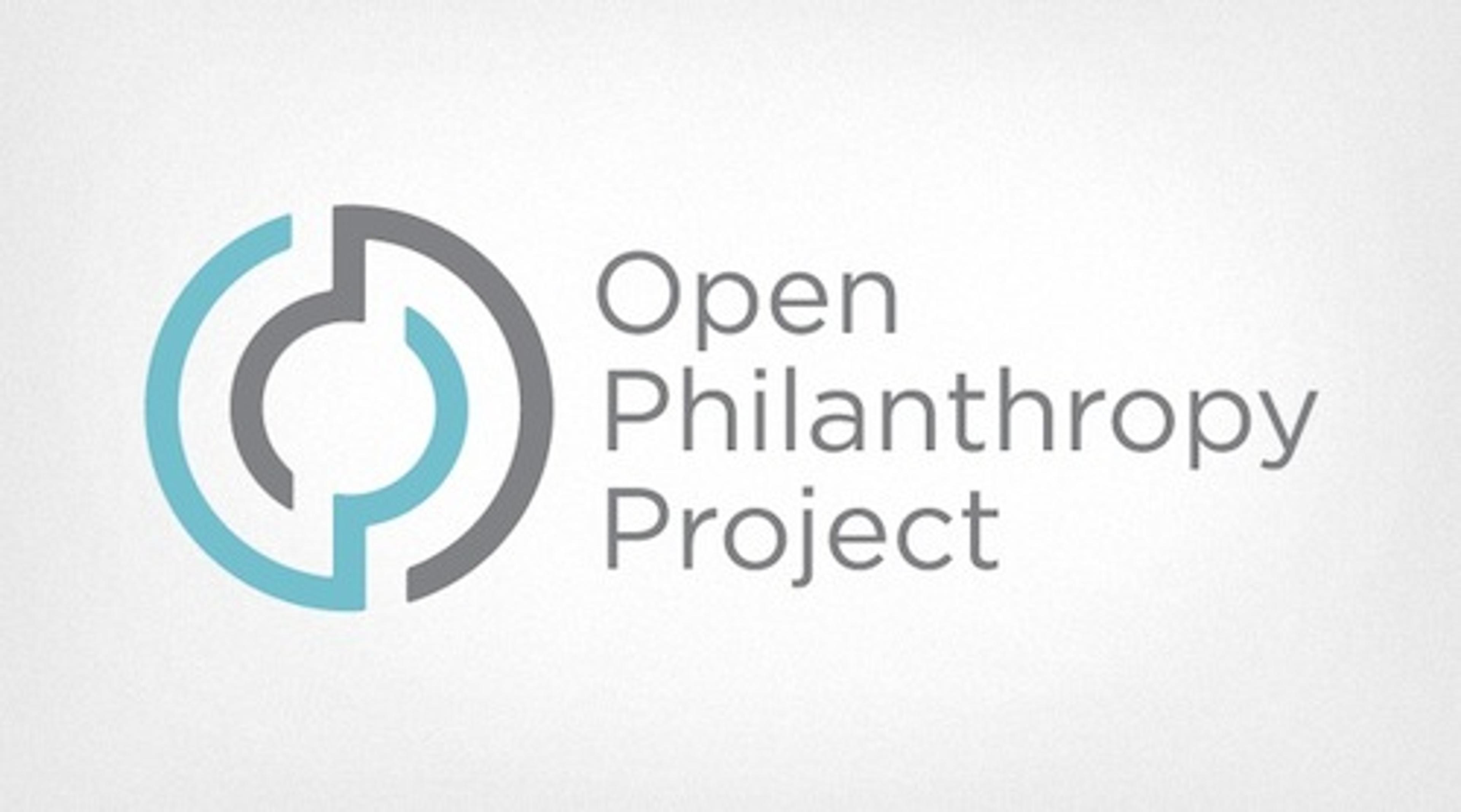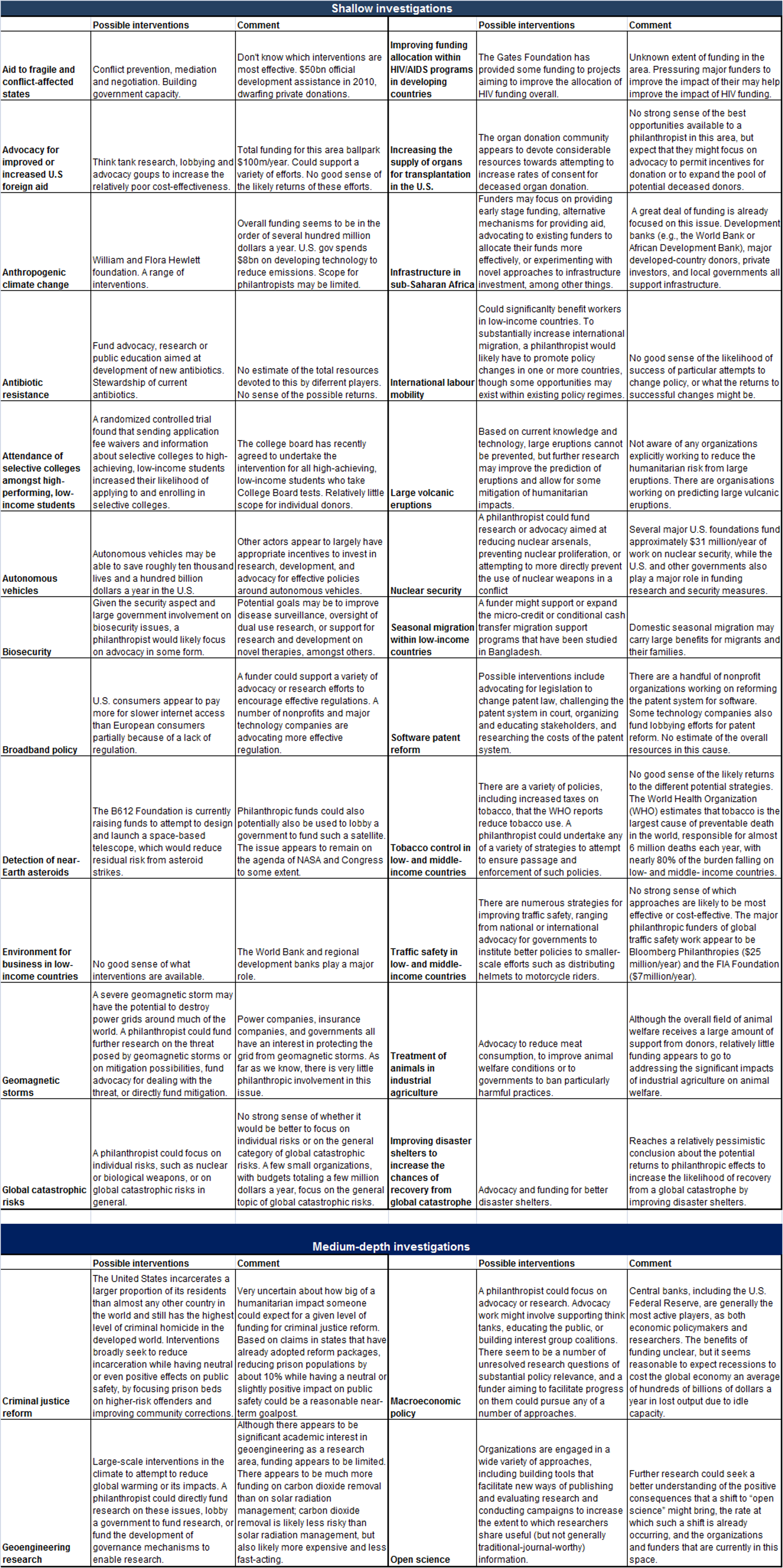Open Philanthropy Project: looking at hard questions on how to do good
How can we accomplish as much good as possible? How can we broaden our outlook on giving so we don’t get stuck with causes where the returns are easily identifiable (such as insecticide-treated bed nets)? What are the returns to investing in cancer research? What are the returns to investing in climate change research? What are the gains to investing in research into near-Earth asteroids? GiveWell has teamed up with Good Ventures to set up the Open Philanthropy Project. In the spirit of effective altruism, this projects tries to find answers to the questions above, with the aim of finding out how donors can accomplish as much good as possible.
Overview of the Open Philanthropy Project

GiveWell was founded by a team of co-workers in the hedge fund industry who wanted to explore cost-effective giving. The organisation grew, produced a lot of research and can in some ways be compared with Giving What We Can. However, there are differences, in the charities recommended by the separate organisations, their undertakings and their methodology. We have previously written about GiveWell here, here, and here.
One central focus of both organisations has been global health charities. Why? Because charities with a good track record in this area often offer quantifiable, measurable and accountable returns. As we explain in our page on assessing charities:
Our research on this so far has consistently shown health interventions to be the most effective at improving people’s lives. As a result, although we still investigate other areas, health interventions are our primary focus.
Examples of interventions in other areas which may be really effective include (re-)communicating research from organisations such as WHO-CHOICE and GiveWell, and funding research about climate change. Part of Giving What We Can’s research is into ways to compare these different types of improvements. But for now, we simply don’t know if many of these areas offer opportunities for effective giving.
With this question in mind, GiveWell set up GiveWell Labs, which later developed into the Open Philanthropy Project (OPP). The OPP takes a step away from the rigour of GiveWell’s traditional charity evaluations, and explores a broad range of issues in four categories:
- Global health and development
- Policy advocacy
- Scientific research
- Reducing global catastrophic risks
In doing so they initially ask the following questions:
- What is the problem? In particular, how many people does it affect, and how deeply does it affect them?
- **What are the possible solutions?**Are there opportunities to make tangible progress?
- Who else is working on it? All else equal, the OPP expects to have more impact where there is less existing philanthropy.
Clearly, it is at present impossible to produce reliable estimates of the return in DALY/$ (disability-adjusted life years per dollar) to donations within such areas as preventing global catastrophic risk or scientific research. But these are important issues. The OPP has produced dozens of shallow investigations and a handful of medium-depth investigations into causes within the four categories. A comprehensive table summarizing the results of these investigations is at the bottom of this post. All the results have been taken from GiveWell’s website.
The investigations should be seen for what they are - shallow investigations - but they serve as very good introductions to these issues for philanthropists. Another benefit of this work is the range of topics covered: the 28 investigations cover topics from criminal justice reform in the US to the risks of geomagnetic storms.
There is some overlap between WHO-CHOICE and the OPP in that they have both investigated tobacco control and traffic safety in low- and middle-income countries. WHO-CHOICE came to the conclusion that there exists a number of “highly cost effective” interventions in this area (under $int2000/DALY). Note that the organisations have different benchmarks and methodologies.
Overview of research
Linking the research back to the questions asked by the OPP we notice that the OPP has mainly investigated issues which affect millions of people, such as climate change and aid to fragile and conflict-affected states. In some cases, it is unclear whether a solution exists. For example, we cannot prevent a large volcanic eruption at present and more research could at best help us predict the next one. In other cases, however, more concrete solutions exist. For example, regulation could help to drive down broadband prices in the US.
Relating to who else is working on the problems, in most of the OPP’s investigations, there exist private organisations which fund research, advocacy or lobbying. In some cases, such as aid to fragile and conflict-affected states, private efforts are completely dwarfed by official aid. This is also the case for anthropogenic (human-caused) climate change, where the US government spent £8bn per year in technology to reduce emissions. One area which looks relatively promising is geo-engineering research, for which funding appears to be limited whilst interventions could potentially have a large impact.
Relatively few final conclusions are reached in OPP research, and the reports primarily serve as introductions to different issues. In one sense, the purpose of this blogpost is to make the OPP research more widely known, so as to diffuse knowledge and prevent repetition. Naturally, future in-depth research needs to be checked and questioned in an academic way, but the OPP reports serve as good introductions to the issues at hand. They can help direct future in-depth research to the most promising areas.
The OPP is hoping to give another big-picture update on where their work stands within the next few weeks. Additionally, they are hoping to conduct shallow investigations of nanotechnology, synthetic biology governance and emerging technology governance.
Overall, it is well worth paying attention to the research that the Open Philanthropy Project publishes, especially as a guide as to what causes are worth exploring in more depth. This may well lead to finding very cost-effective areas for giving or political advocacy.
Overview of the results obtained so far
Please note that this table contains reproduced material from the Open Philanthropy Project. If you find a particular investigation interesting, you should consult their website with the full reports here.
